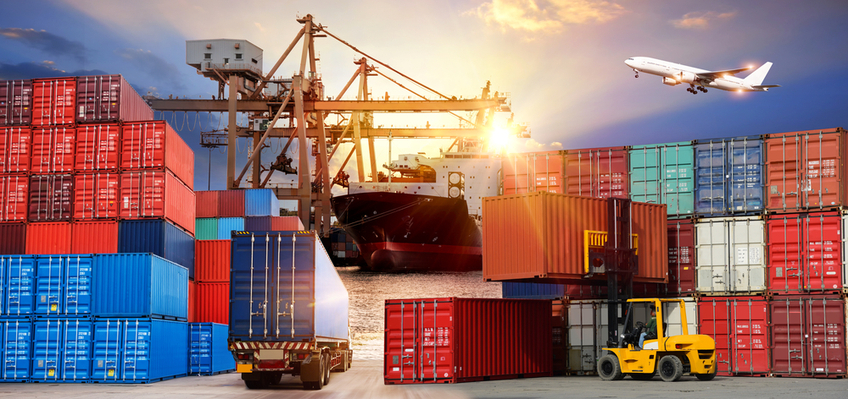Cross-Border Shipping and Trade: A Comprehensive Guide
In a world of growing globalization, cross-border shipping and trade have become pivotal for businesses looking to expand internationally. From accessing new markets to optimizing supply chains, understanding the intricacies of cross-border logistics is critical to success.

What Is Cross-Border Shipping and Trade?
Cross-border shipping and trade refer to the movement of goods, services, or capital across international borders. This process involves a network of stakeholders, including manufacturers, logistics providers, customs brokers, and carriers, working together to ensure smooth transactions.
Key Components of Cross-Border Shipping:
- Customs Documentation: Proper documentation is crucial for avoiding delays.
- Tariffs and Duties: These are the taxes imposed on imported and exported goods.
- Compliance with Regulations: Adhering to country-specific trade policies.
- Shipping Methods: Includes air, sea, road, or rail transportation.
The Importance of Cross-Border Trade
Expanding beyond domestic markets opens up opportunities for growth and diversification. Here’s why cross-border trade is essential for businesses:
1. Access to Global Markets
Cross-border shipping allows businesses to tap into international customer bases, driving revenue and growth.
2. Competitive Edge
By sourcing products globally, businesses can reduce costs and offer better pricing.
3. Supply Chain Optimization
Cross-border trade enables access to raw materials and goods unavailable locally.
Fact: The global cross-border e-commerce market was valued at over $900 billion in 2022 and is expected to grow exponentially in the coming years.
Challenges in Cross-Border Shipping
While rewarding, cross-border shipping is not without its complexities. Below are the key challenges businesses face:
1. Customs Clearance
Delays in customs can disrupt supply chains. A lack of proper documentation or non-compliance with regulations often leads to issues.
2. Shipping Costs
Cross-border logistics can be expensive due to tariffs, duties, and transportation costs.
3. Currency and Payment Issues
Handling different currencies and international payment systems can complicate transactions.

4. Cultural and Language Barriers
Effective communication is essential for seamless international trade.
Best Practices for Cross-Border Shipping
1. Plan Ahead
- Research import/export requirements for the target countries.
- Develop a contingency plan to address potential delays or disruptions.
2. Leverage Technology
Use logistics management software to streamline operations, such as route optimization and shipment tracking.
3. Partner with Experts
Collaborate with customs brokers, freight forwarders, and experienced logistics providers.
4. Focus on Compliance
Stay updated on trade regulations and tax policies to avoid penalties.
Choosing the Right Shipping Method
When it comes to cross-border trade, choosing the right shipping method is critical to balancing cost, speed, and reliability.
1. Air Freight
- Best for: High-value and time-sensitive goods.
- Advantages: Speed and reliability.
- Drawbacks: Higher costs compared to other modes.
2. Sea Freight
- Best for: Bulk goods with less urgency.
- Advantages: Cost-effective for large shipments.
- Drawbacks: Slower delivery times.
3. Road Freight
- Best for: Trade within neighboring countries.
- Advantages: Flexible and cost-efficient for short distances.
- Drawbacks: Limited to landlocked regions.
4. Rail Freight
- Best for: Eco-friendly transportation over long distances.
- Advantages: Economical and reliable.
- Drawbacks: Limited coverage compared to road freight.
Top Industries Leveraging Cross-Border Trade
Certain industries thrive on cross-border trade due to their global demand and supply chains:
- E-Commerce: Online retailers like Amazon and Alibaba are pioneers in international trade.
- Manufacturing: Sourcing raw materials and exporting finished goods.
- Pharmaceuticals: Import/export of medicines and healthcare equipment.
Did You Know?
In 2023, cross-border e-commerce accounted for nearly 25% of global online sales.

Emerging Trends in Cross-Border Trade
1. Digital Transformation
Technologies like blockchain and AI are revolutionizing cross-border logistics by enhancing transparency and automating tasks.
2. Sustainable Practices
Eco-friendly packaging, carbon-neutral shipping, and sustainable sourcing are becoming the norm.
3. Omnichannel Commerce
Retailers are adopting an omnichannel approach, integrating online and offline sales for seamless customer experiences.
FAQs about Cross-Border Shipping and Trade
1. What documents are required for cross-border shipping?
Essential documents include:
– Commercial Invoice
– Bill of Lading
– Packing List
– Certificate of Origin
– Import/Export Licenses
2. How can I reduce cross-border shipping costs?
- Consolidate shipments.
- Optimize packaging to reduce weight.
- Negotiate with logistics providers for better rates.
3. Is cross-border shipping sustainable?
Many companies are adopting greener practices, such as using eco-friendly materials and optimizing routes to reduce emissions.
Conclusion
Cross-border shipping and trade are indispensable in today’s interconnected world. By overcoming challenges and leveraging best practices, businesses can unlock vast opportunities in global markets. Whether you’re an e-commerce retailer or a manufacturing giant, understanding and optimizing cross-border logistics is key to thriving in the global economy.
For more expert insights on logistics and international trade, explore industry resources.


